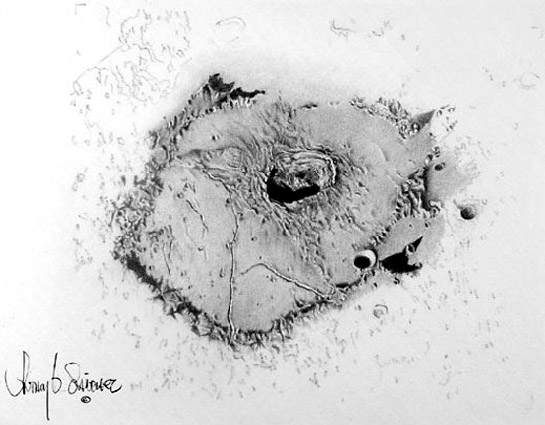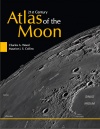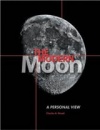Difference between revisions of "April 14, 2004"
(Created page with "__NOTOC__ =The Town in the Lake of Death= ---- ===COMMENTS?=== Click on this icon image:PostIcon.jpg at the upper right to post a comment.") |
|||
| (12 intermediate revisions by the same user not shown) | |||
| Line 1: | Line 1: | ||
__NOTOC__ | __NOTOC__ | ||
=The Town in the Lake of Death= | =The Town in the Lake of Death= | ||
| − | + | <!-- Start of content --> | |
| − | + | <table width="640" border="0" align="center" cellpadding="6" cellspacing="2"> | |
| − | + | <tr> | |
| − | ---- | + | </tr> |
| − | === | + | </table> |
| − | + | <table width="85%" border="0" align="center" cellpadding="6" cellspacing="2"> | |
| + | <tr> | ||
| + | <td colspan="2"><div align="center"> | ||
| + | [[File:LPOD-2004-04-14.jpeg|LPOD-2004-04-14.jpeg]]</div> | ||
| + | </td> | ||
| + | </tr> | ||
| + | </table> | ||
| + | <table width="100%" border="0" cellpadding="8"> | ||
| + | <tr> | ||
| + | <td><div align="center"><p>Image Credit: [mailto:anthony.sanchez3@comcast.net Anthony Sanchez]</p></div></td> | ||
| + | </tr> | ||
| + | </table> | ||
| + | <table class="story" border="0" bgcolor="#FFFFFF" width="90%" cellpadding="10" align="center"><tr><td> | ||
| + | <p class="story" align="center"><b>The Town in the Lake of Death </b></p> | ||
| + | <p class="story" align="left"> The first telescopic observations of the Moon by Galileo were recorded in a series of drawings, | ||
| + | thus beginning a nearly 400 year tradition. The advent of the space age brought high resolution | ||
| + | lunar images from orbiting probes, but drawings continued, by two very different types of | ||
| + | observers. Amateur astronomers have never given up the pleasure of drawing the Moon, often | ||
| + | producing evocative renditions ([[February_9,_2004|LPOD Feb. 9]]) that give a better | ||
| + | feeling for the observing experience than any photograph. The other modern drawings of the | ||
| + | Moon resulted from a major institutional program by the Astrogeology Center of the US | ||
| + | Geologic Survey in Flagstaff. Because of the difficulty of compiling a photographic image | ||
| + | that showed all features to good advantage, the USGS hired scientific illustrators to | ||
| + | mentally combine the best images and artistically depict the lunar surface under a constant | ||
| + | illumination angle. The resulting shaded relief airbrush maps had a very characteristic | ||
| + | survey style: professional, precise and pleasant. Anthony Sanchez, who worked at the Survey, | ||
| + | learned the techniques and drew - or airbrushed - some of the Mars quadrangle maps. | ||
| + | In retirement now, Anthony has created this wonderful drawing of the crater Burg within | ||
| + | Lacus Mortis. Compare it with KC Pau's [[January_30,_2004|LPOD Jan. 30]] great photo! | ||
| + | </p> | ||
| + | <blockquote> | ||
| + | <p align="right" class="story">— [mailto:tychocrater@yahoo.com Chuck Wood]</p> | ||
| + | </blockquote> <p><b>Technical Details:</b><br> | ||
| + | This is a pencil drawing of the lunar crater Burg and the surrounding Lacus Mortis | ||
| + | region. The original drawing is about 150 x 180 mm / 5 x 7 inches and was completed | ||
| + | by artist, Anthony G. Sanchez, from personal observation and sketches made on the | ||
| + | following dates: July 16, 1995, March 3, 2002, and May 1, 2002, using a Celestron | ||
| + | C5+, various powers. In addition, NASA Lunar Orbiter IV images IV-86-H2 and IV-91-H2 | ||
| + | and copyrighted images taken by astrophotographers K.C. Pau of Hong Kong and John | ||
| + | Sussenbach of The Netherlands. This work would have been difficult to complete | ||
| + | without their co-operation and gracious permission to use their photos. </p> | ||
| + | <p class="story"><b>Related Links:</b><br> | ||
| + | [http://wwwflag.wr.usgs.gov/USGSFlag/USGSFlag.html USGS Astrogeology]</p> | ||
| + | <p><b>Yesterday's LPOD:</b> [[April 13, 2004|Apollo 13 on April 13]] </p> | ||
| + | <p><b>Tomorrow's LPOD:</b> [[April 15, 2004|A Burning Issue]] </p> | ||
| + | </td> | ||
| + | </tr> | ||
| + | </table> | ||
| + | <!-- start bottom --> | ||
| + | <hr> | ||
| + | <p align="center" class="main_titles"><b>Author & Editor:</b><br> | ||
| + | [mailto:tychocrater@yahoo.com Charles A. Wood]</p> | ||
| + | <!-- Cleanup of credits --> | ||
| + | <!-- Cleanup of credits --> | ||
| + | <!-- Cleanup of credits --> | ||
| + | <!-- Cleanup of credits --> | ||
| + | <!-- Cleanup of credits --> | ||
| + | <!-- Cleanup of credits --> | ||
| + | <!-- Cleanup of credits --> | ||
| + | <p> </p> | ||
| + | <!-- End of content --> | ||
| + | {{wiki/ArticleFooter}} | ||
Latest revision as of 19:15, 7 February 2015
The Town in the Lake of Death
Image Credit: Anthony Sanchez |
|
The Town in the Lake of Death The first telescopic observations of the Moon by Galileo were recorded in a series of drawings, thus beginning a nearly 400 year tradition. The advent of the space age brought high resolution lunar images from orbiting probes, but drawings continued, by two very different types of observers. Amateur astronomers have never given up the pleasure of drawing the Moon, often producing evocative renditions (LPOD Feb. 9) that give a better feeling for the observing experience than any photograph. The other modern drawings of the Moon resulted from a major institutional program by the Astrogeology Center of the US Geologic Survey in Flagstaff. Because of the difficulty of compiling a photographic image that showed all features to good advantage, the USGS hired scientific illustrators to mentally combine the best images and artistically depict the lunar surface under a constant illumination angle. The resulting shaded relief airbrush maps had a very characteristic survey style: professional, precise and pleasant. Anthony Sanchez, who worked at the Survey, learned the techniques and drew - or airbrushed - some of the Mars quadrangle maps. In retirement now, Anthony has created this wonderful drawing of the crater Burg within Lacus Mortis. Compare it with KC Pau's LPOD Jan. 30 great photo! Technical Details: This is a pencil drawing of the lunar crater Burg and the surrounding Lacus Mortis region. The original drawing is about 150 x 180 mm / 5 x 7 inches and was completed by artist, Anthony G. Sanchez, from personal observation and sketches made on the following dates: July 16, 1995, March 3, 2002, and May 1, 2002, using a Celestron C5+, various powers. In addition, NASA Lunar Orbiter IV images IV-86-H2 and IV-91-H2 and copyrighted images taken by astrophotographers K.C. Pau of Hong Kong and John Sussenbach of The Netherlands. This work would have been difficult to complete without their co-operation and gracious permission to use their photos.Related Links: Yesterday's LPOD: Apollo 13 on April 13 Tomorrow's LPOD: A Burning Issue |
Author & Editor:
Charles A. Wood
COMMENTS?
Register, Log in, and join in the comments.




